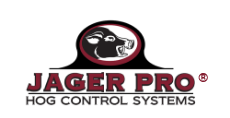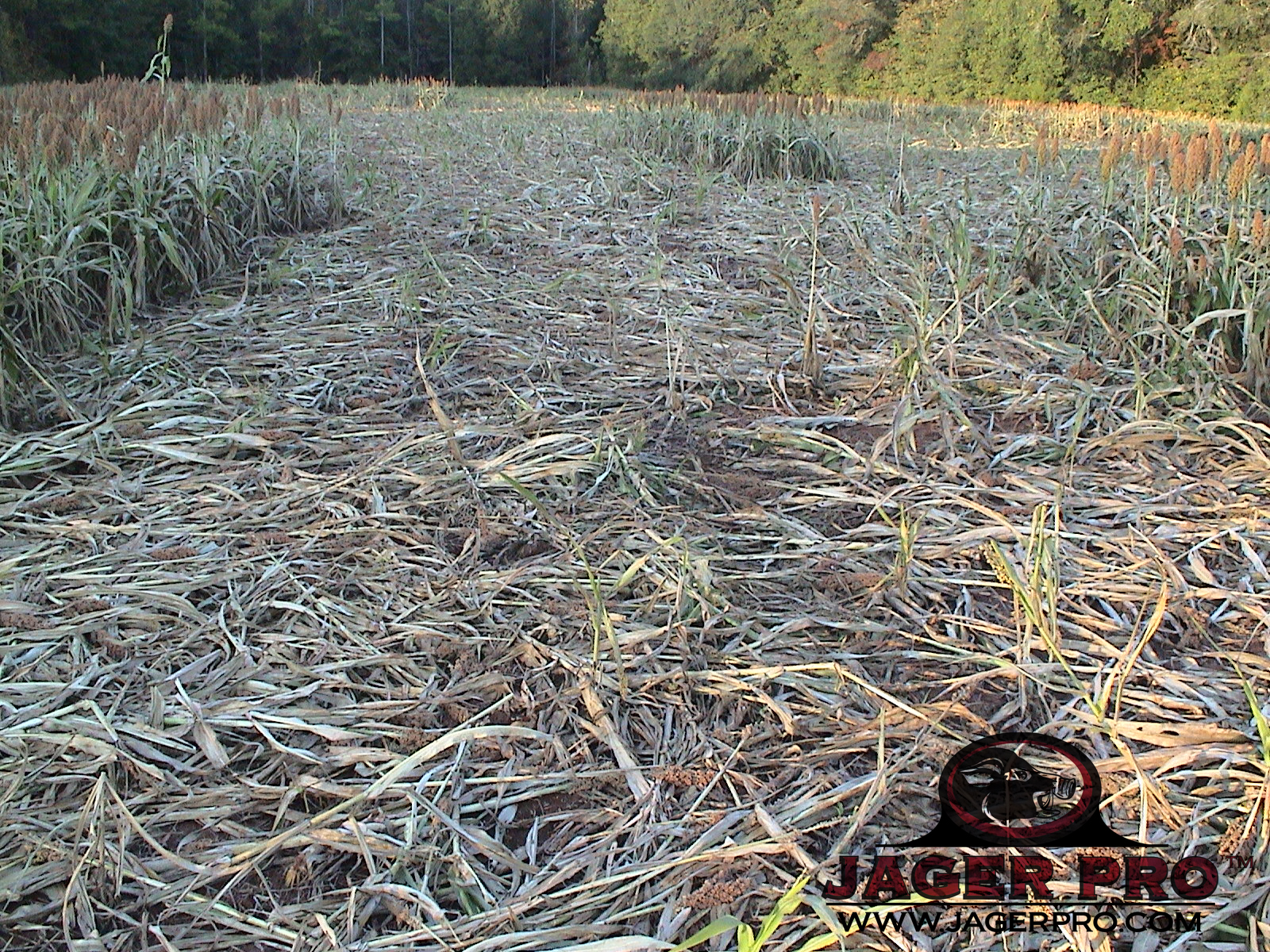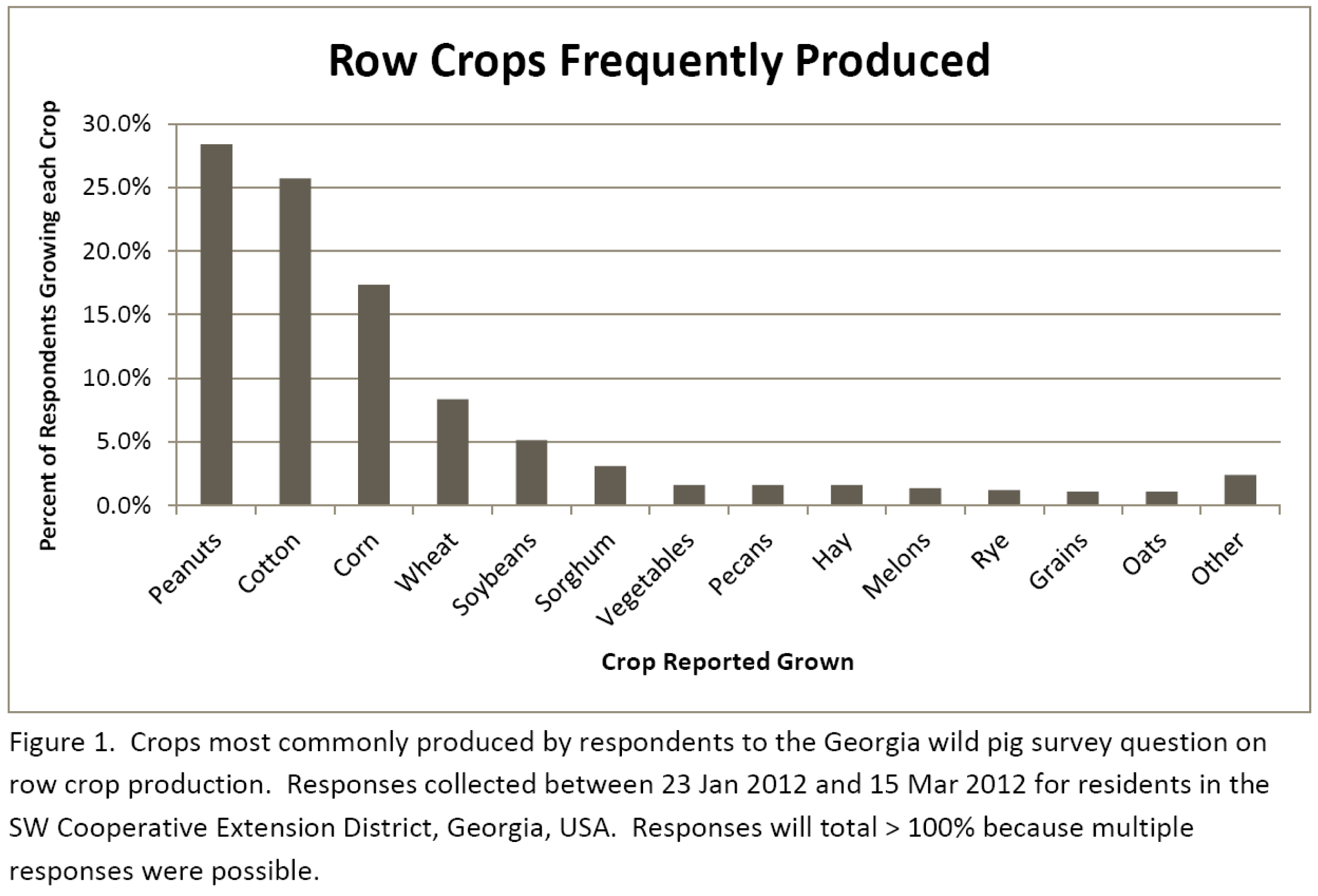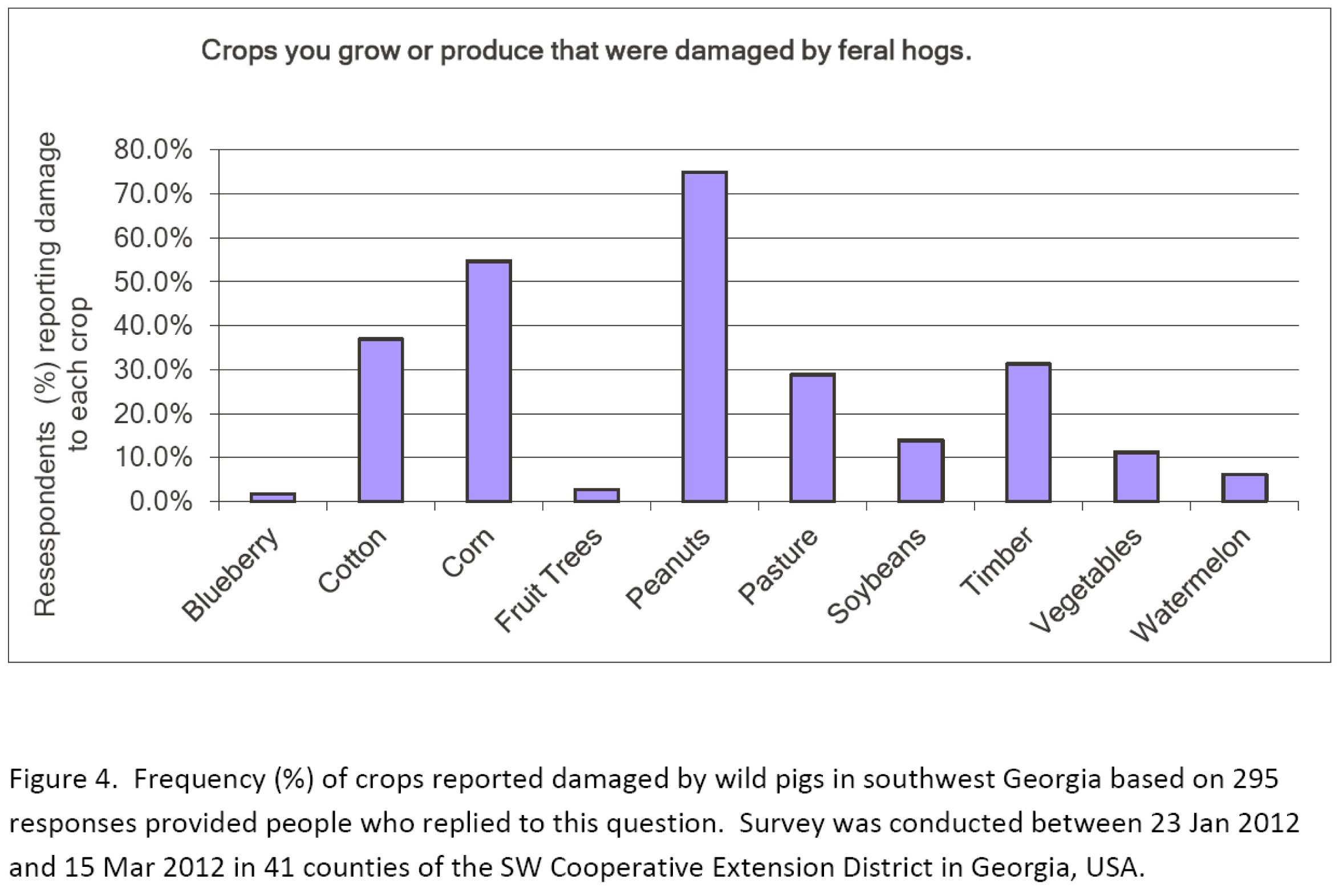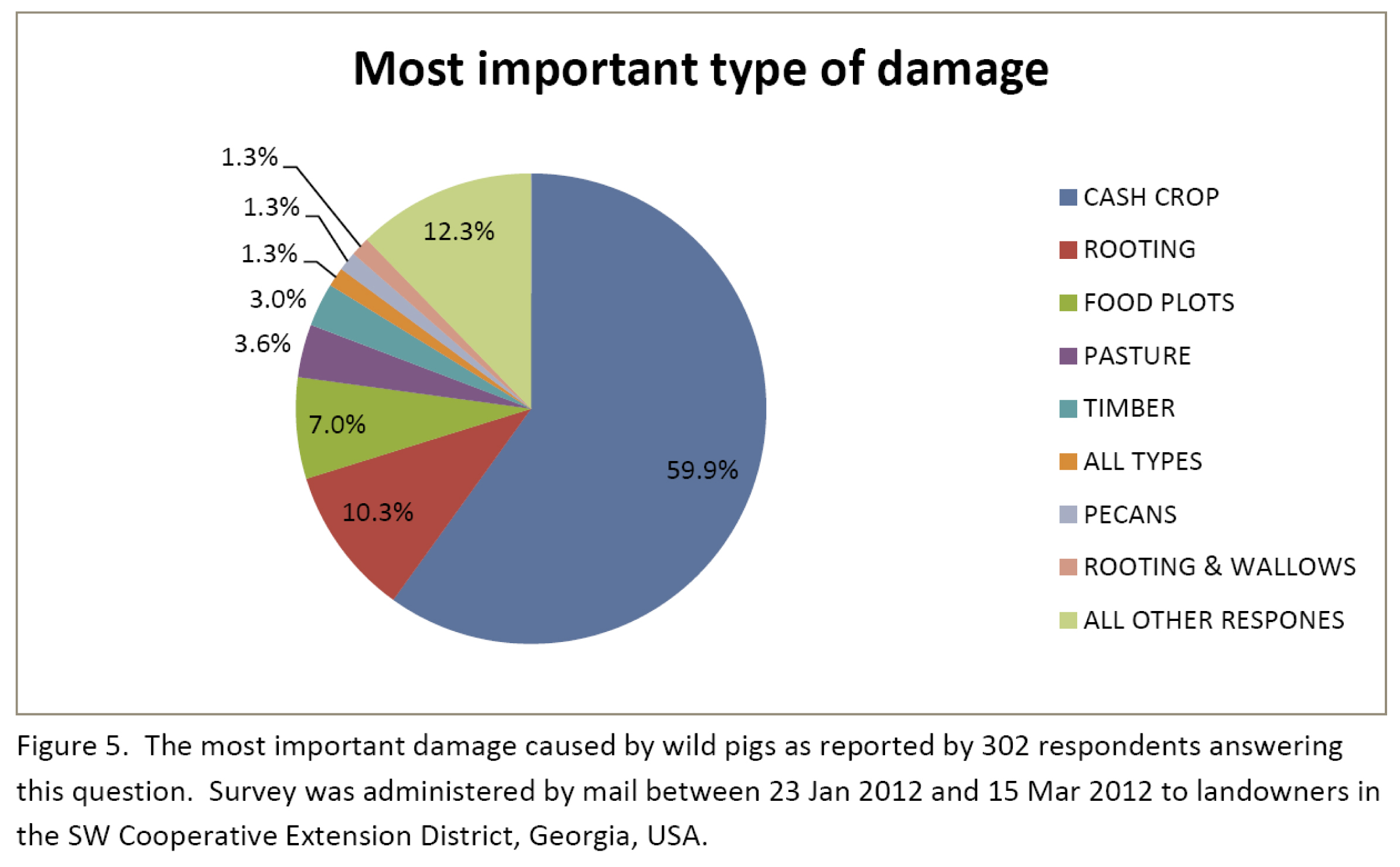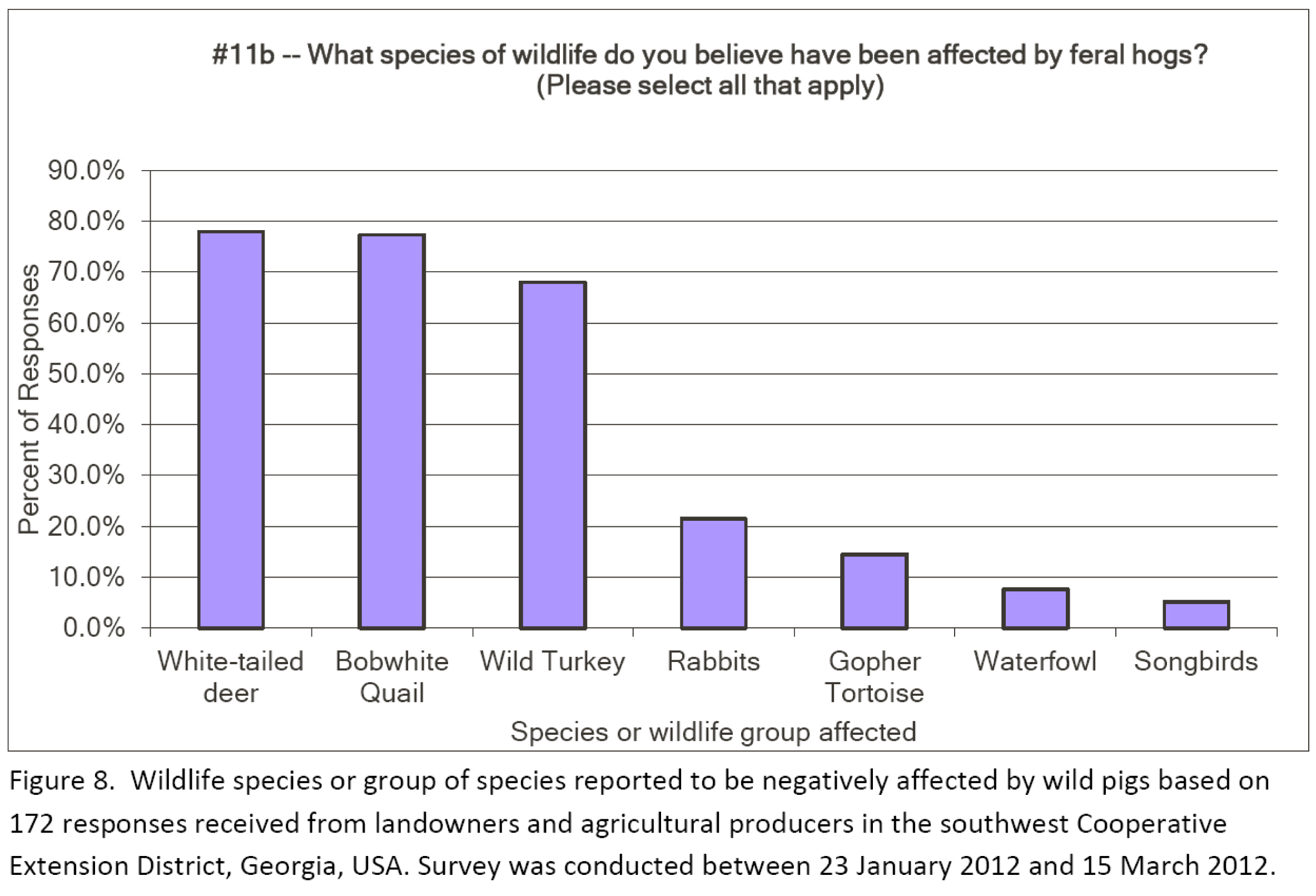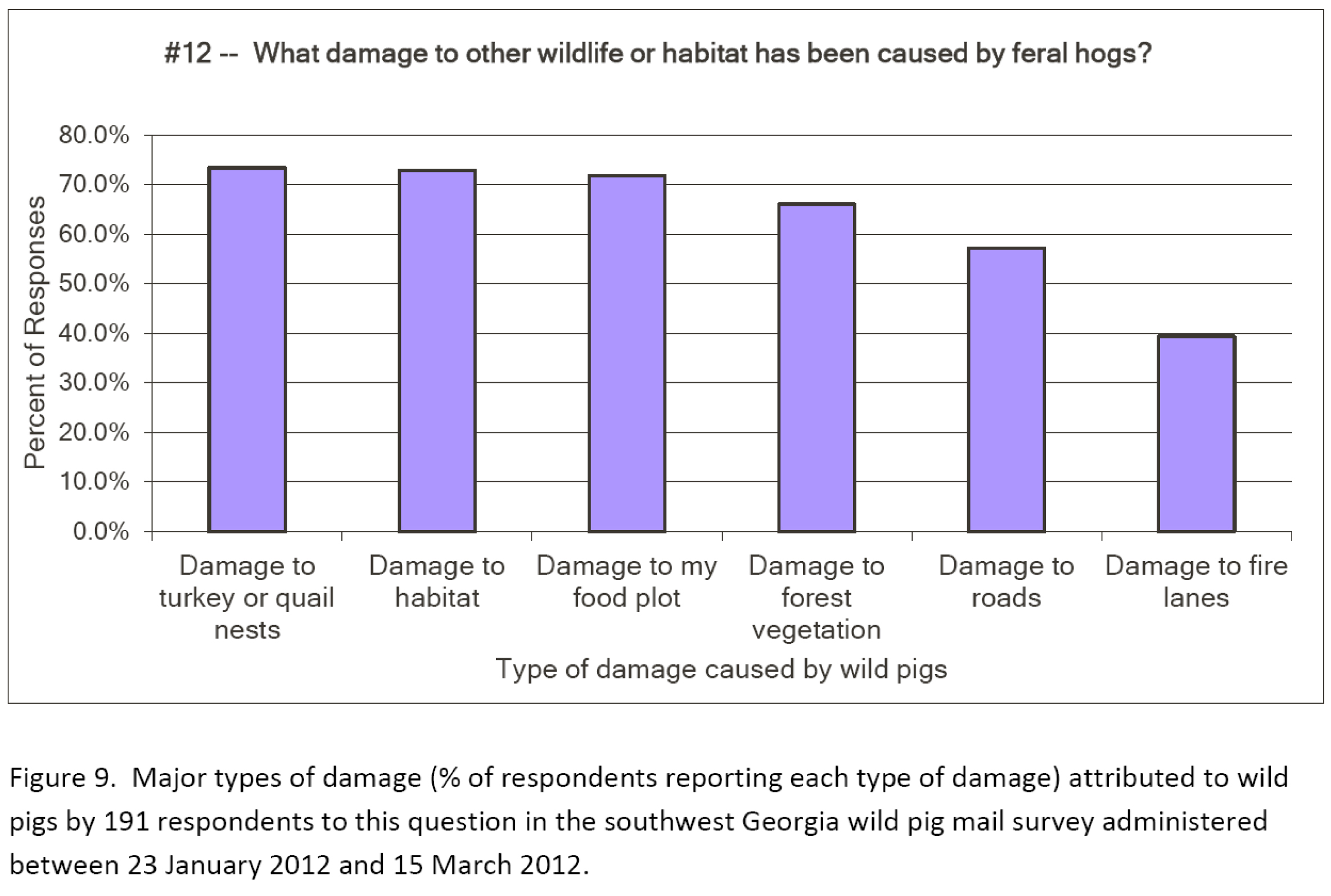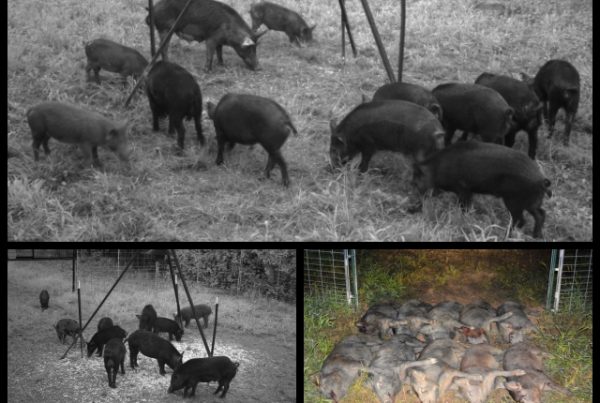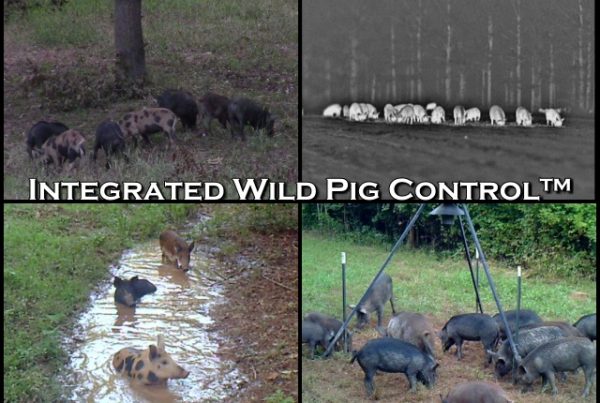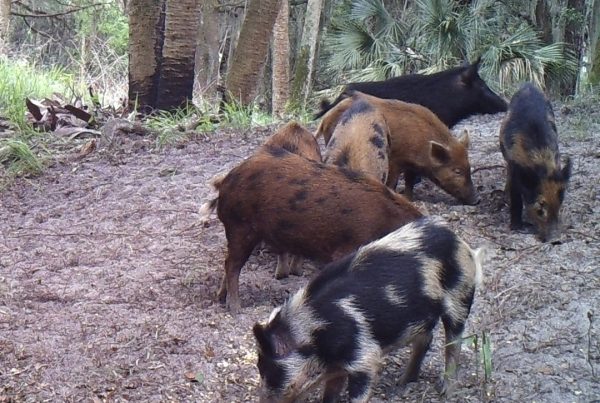Non-Native, Invasive Species
The environmental harm caused by non-native, invasive species (such as wild hogs, nutria, Burmese pythons, northern snakeheads, etc.) was created by man. Human action led to these animals being released in the United States. Wild hogs do not belong in North America. They harmfully impact agriculture, native vegetation, vertebrate and invertebrate fauna, soil properties and water quality causing an annual negative economic impact of $2.5 billion dollars in the United States.
Wild Hog Damage in Georgia
Agriculture, Timber and Native Vegetation Damage
 A six-page wild pig questionnaire was administered to farmers and landowners by the University of Georgia – Warnell School of Forestry and Natural Resources in January of 2012. A total of 1200 surveys were delivered to randomly selected recipients and 471 useable surveys were returned yielding a 39.25% response rate.
A six-page wild pig questionnaire was administered to farmers and landowners by the University of Georgia – Warnell School of Forestry and Natural Resources in January of 2012. A total of 1200 surveys were delivered to randomly selected recipients and 471 useable surveys were returned yielding a 39.25% response rate.
 The below wild hog damage estimates, figures and graphs were provided by the 2012 Georgia Wild Pig Survey Final Report. Respondents reported an average of $12,646 dollars in crop damage per person or an average loss of $30 per acre attributed to wild pigs. This average produced an estimated 57 million dollars ($57,005,321) from wild pig damage to crops and/or crop related damage in Southwest Georgia. Respondents reported an average loss to items other than crops (e.g., timber, food plots, lease values, etc.) due to wild pigs during 2011 of $5,381 per person yielding a loss of $12.75 per acre. This average produced an estimated $24 million dollars ($24,256,336). Together losses due to wild hogs reportedly exceeded 81 million dollars in 2011. Damage estimates in this mail survey referred only to the 41 counties located in the Southwest Cooperative Extension District.
The below wild hog damage estimates, figures and graphs were provided by the 2012 Georgia Wild Pig Survey Final Report. Respondents reported an average of $12,646 dollars in crop damage per person or an average loss of $30 per acre attributed to wild pigs. This average produced an estimated 57 million dollars ($57,005,321) from wild pig damage to crops and/or crop related damage in Southwest Georgia. Respondents reported an average loss to items other than crops (e.g., timber, food plots, lease values, etc.) due to wild pigs during 2011 of $5,381 per person yielding a loss of $12.75 per acre. This average produced an estimated $24 million dollars ($24,256,336). Together losses due to wild hogs reportedly exceeded 81 million dollars in 2011. Damage estimates in this mail survey referred only to the 41 counties located in the Southwest Cooperative Extension District.
Eighty-seven percent of respondents agreed or strongly agreed that feral hogs are a nuisance. Ninety percent of respondents did not enjoy seeing feral hogs on their property and 81% worried about problems feral hogs may cause to their property. Eighty-two percent agreed or strongly agreed that feral hogs should be eliminated wherever possible.
Native Wildlife Affected
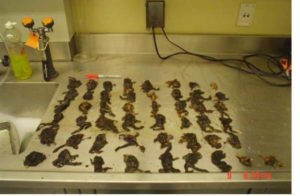
Soil Erosion and Degraded Water Quality
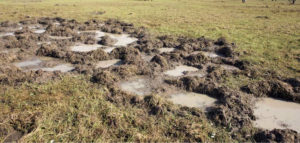
Disturbed soil in agricultural fields from wallowing and rooting causes significant damage to plant roots, soil integrity and soil nutrients. The result is widespread soil erosion which damages planting, harvesting and irrigation equipment along with extensive vegetation loss which reduces agricultural crop yields. The trampled, low-quality soil which remains is often potholed and inhabited by invasive plants requiring extensive labor to repair before another crop rotation can be introduced. Every wild hog damage related event produces a financial expense to producers and landowners which negatively affects their annual income.
Wild Hog Diseases, Viruses and Parasites
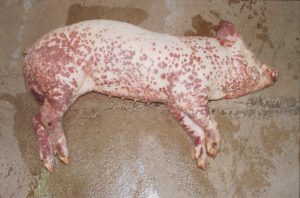
Disease transmission from feral pigs to domestic livestock is a major concern to the farming industry. Some of these diseases are swine specific (both feral and domestic) but others affect cats, dogs, sheep, goats, cattle, horses and native wildlife. Infectious diseases that are significant to livestock include African Swine Fever (ASF), Classical Swine Fever (Hog Cholera), Bovine Tuberculosis (TB), Foot & Mouth Disease (FMD), Pseudorabies Virus (PRV) and Swine Brucellosis. Zoonotic diseases transmissible from wild hogs to humans include Brucellosis, Cryptosporidiosis, E. coli, Giardiasis, Leptospirosis, Rabies, Salmonellosis, Swine Influenza Viruses, Toxoplasmosis and Trichinosis.
The seven-page brochure “Diseases of Feral Swine” written by the University of Georgia – College of Veterinary Medicine is the most thorough and informative document concerning this topic.
